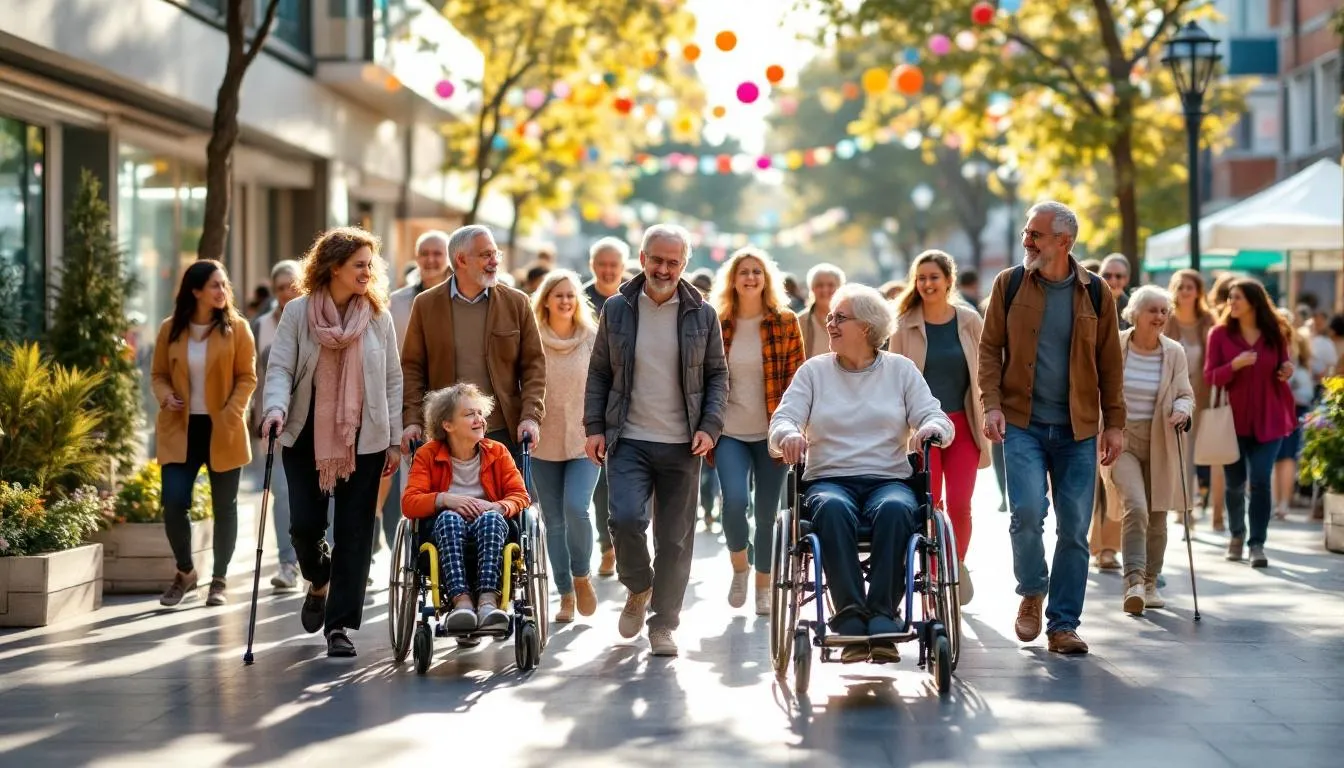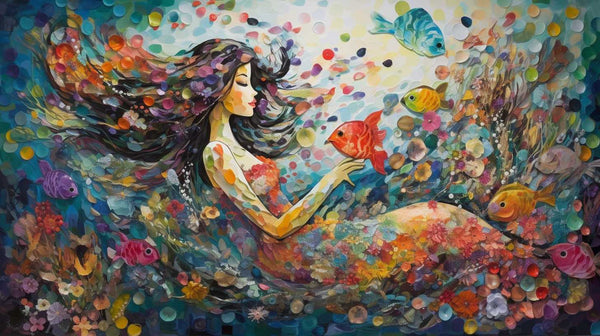Both Sides Now: Joni Mitchell’s Song, Meaning & Autistic ...
Clouds are more than shapes in the sky. They’re feather canyons and ice cream castles, shifting illusions of what lif...

Written by HeyASD.com Team
The Hidden Disabilities Sunflower is a globally recognized symbol that helps people with invisible conditions access support and understanding in public spaces. This bright green lanyard adorned with distinctive yellow sunflowers serves as a discreet way for individuals to signal they may need extra time, assistance, or simply more understanding without having to disclose specific details about their condition.
Since its launch in 2016, the hidden disabilities sunflower program has transformed how airports, hospitals, transportation networks, and countless other venues support travelers with hidden disabilities. From its origins at UK airports to worldwide adoption, this symbol now represents dignity, empowerment, and inclusion for millions of people with conditions that may not be immediately obvious to others.
In this comprehensive guide, you’ll discover what the sunflower symbol represents, its remarkable history from Gatwick Airport to global recognition, and how it creates more inclusive environments for people with autism spectrum disorder, chronic pain learning disabilities, mental health conditions, and hundreds of other hidden disabilities.
The hidden disabilities sunflower program uses a discreet symbol - the sunflower - to let airport staff and service providers know that a traveler may need additional support. Rather than focusing on limitations, the sunflower was deliberately chosen to represent positive qualities: confidence, growth, strength, happiness, and hope.
Hidden disabilities are conditions that may not be immediately obvious to others but can significantly impact daily life. These include autism spectrum disorder, chronic pain, learning disabilities, mental health conditions, mobility impairments, and sensory processing differences. The sunflower program aims to create a more inclusive environment where people can access support without uncomfortable explanations or medical documentation.
The symbol operates on a simple principle: voluntary self-identification. Those who choose to wear the hidden disabilities sunflower lanyard are signaling they may need extra time during security checks, assistance with navigating airport terminals, or simply more patient understanding from staff members.
The official database now includes autism spectrum disorder, chronic pain learning disabilities, mental health conditions, mobility impairments, and over 900 other recognized conditions. Key categories include:
Autism spectrum disorder, chronic pain, learning disabilities
ADHD and attention-related differences
Mental health conditions, mobility impairments
Sensory processing disorders and hearing/vision differences
Chronic fatigue syndrome and fibromyalgia
Dementia and memory-related conditions
Gastrointestinal disorders and invisible medical conditions
The beauty of the program lies in its inclusivity - no medical proof or diagnosis is required. Anyone who identifies as having a hidden disability can choose to participate, making it truly accessible and reducing gatekeeping barriers.

One of the most powerful aspects of the hidden disabilities sunflower program is how it creates visibility while preserving privacy. The discreet symbol, the sunflower, allows individuals to communicate their needs without having to repeatedly explain their condition or justify their requirements.
For many people with autism spectrum disorder, chronic pain, or other hidden disabilities, the constant need to explain their situation can be emotionally exhausting. The sunflower eliminates this burden, allowing people to access support while maintaining their dignity and autonomy.
The sunflower program helps travelers feel more comfortable and confident during their journey. By normalizing the conversation around hidden disabilities, the symbol contributes to broader cultural shifts toward acceptance and understanding.
Airport staff trained to recognize a hidden disabilities sunflower can provide appropriate support - whether that’s allowing extra time during security screening, offering clear verbal instructions, or simply being more patient and understanding.
Rather than framing disability as something to hide or overcome, the sunflower represents pride and self-advocacy. It tells the world: “I belong here, I have value, and I deserve support when I need it.” This shift from shame to empowerment has profound psychological benefits for users.
The sunflower has become particularly meaningful within autism and neurodiversity communities. It aligns with movements that celebrate neurological differences as natural variations rather than deficits to be fixed. Many families find that using the sunflower helps travelers with hidden disabilities navigate public spaces with greater confidence and less anxiety.
The hidden disabilities sunflower program began in 2016 at Gatwick Airport through collaboration between airport leadership and disability advocacy organizations including the National Autistic Society, Alzheimer’s Society, and Autism Support Crawley. These partners recognized that many passengers needed support but had no discreet way to communicate this to staff.
Key expansion milestones include:
2016: Initial launch at Gatwick Airport with extensive feedback from disability charities
April 2019: London North Eastern Railway became the first railway company to adopt the program
July 2020: All British railway companies formally recognized the sunflower symbol
2021-2025: Over 1 million lanyards distributed globally, with adoption spreading to healthcare, education, retail, and emergency services
2023: Brazil granted the sunflower official national symbol status
2024: LEGO partnership created sunflower lanyard minifigures, further raising awareness
The program’s success stems from its simple yet powerful premise: creating universal recognition for a voluntary symbol that facilitates understanding without requiring disclosure.
The primary recognition tool is the distinctive green sunflower lanyard, available free at participating venues or through the official Hidden Disabilities Sunflower website. Alternative options include sunflower pins, badges, wristbands, and digital ID cards, allowing people to choose the format that feels most comfortable.
Passengers can request sunflower items through various channels:
Official Hidden Disabilities Sunflower website
Participating airports, hospitals, and transportation hubs
Authorized retailers and community organizations
Educational institutions and workplace disability services
It’s important to source items through official channels to ensure authenticity and support the program’s integrity. Beware of inflated reseller prices or counterfeit versions that may not be recognized by trained staff.
The sunflower program at Corpus Christi International Airport exemplifies how venues implement recognition:
Airport Services:
Access to expedited security screening when appropriate
Priority boarding assistance for those who need it
Extra time and patience during check-in and security processes
Clear communication and navigation assistance
Transportation Networks:
All UK railway companies now recognize the symbol
Bus services and public transit systems across multiple countries
Ferry terminals and cruise ship facilities
International airports spanning six continents
Healthcare and Community Settings:
NHS hospitals and private healthcare facilities
Universities and educational institutions
Retail chains and shopping centers
Sports venues, entertainment facilities, and museums

For travelers planning to visit Corpus Christi International Airport or other participating venues:
Advance Planning: Lanyards should be requested 10 business days ahead of travel when possible
Request Options: Complete a lanyard request form online or please call our offices for assistance
Delivery Methods: Items can be mailed to them ahead of the trip or arranged for pickup in person
Local Pickup: Many lanyards can be picked up Monday through Friday between the hours specified by each venue
For the program at Corpus Christi specifically:
Sunflower lanyards are available through advance request or on-site pickup
Travelers with hidden disabilities should plan 48 hours ahead when possible for mail delivery
Person pick-ups can be arranged during business hours
Those traveling to Corpus Christi from a different airport should inquire with that airport about their specific procedures
No prerequisites or documentation required - the program operates on self-identification and trust. Simply wearing the sunflower communicates your potential need for support without requiring medical proof or detailed explanations.
Key usage principles:
Wear the symbol visibly when you want to signal potential support needs
Expect others to recognize the symbol in trained environments, but be prepared to briefly explain in newer locations
Use the symbol as a conversation starter about accessibility when appropriate
Remember that recognition varies by location and staff training levels
Organizations implementing the sunflower program typically train staff to:
Recognize the sunflower symbol from a distance
Offer appropriate assistance without being intrusive
Provide clear, patient communication
Allow extra time for processes when needed
Avoid making assumptions about specific conditions or needs
At HeyASD, we see the sunflower as more than a discreet tool for assistance — it’s a symbol of pride, belonging, and community. For many autistic and disabled adults, wearing or displaying the sunflower is about visibility on their own terms. It says: I deserve space, patience, and dignity without having to explain myself over and over.
We designed our Hidden Disabilities Sunflower Collection to give people more than just a lanyard. Every item — from sensory-friendly sunflower tees to calming décor and meaningful accessories — is created with the community in mind. These pieces aren’t mass-produced tokens; they’re thoughtfully made to help you feel comfortable, represented, and proud.
The sunflower is also a powerful tool for connection. Families, allies, and advocates can use it to spark conversations and encourage local businesses, schools, and workplaces to become more inclusive. Whether it’s wearing a sunflower pin at work or gifting a loved one a sunflower design that reflects their identity, every small act helps normalize hidden disability awareness.
Share resources about the sunflower with your community
Encourage venues to adopt staff training around the symbol
Use sunflower products not only as recognition tools, but as expressions of pride
Support autistic-owned businesses like HeyASD that reinvest in the community
Together, these actions help the sunflower bloom as a global sign of empowerment — not pity, not deficit, but celebration.

What does the sunflower lanyard mean and who can wear it? The sunflower lanyard indicates that the wearer has a hidden disability and may need extra understanding, time, or assistance. Anyone who identifies as having a non-visible condition can choose to wear it - no medical proof or diagnosis is required.
Where can I get an official Hidden Disabilities Sunflower lanyard? Official sunflower lanyards are available free from participating venues like airports and hospitals, or can be purchased through the Hidden Disabilities Sunflower website. For travelers with hidden disabilities visiting specific airports, check each venue’s lanyard request form process.
Do I need proof of disability to wear a sunflower symbol? No documentation is required. The program operates on self-identification and trust, allowing anyone who experiences hidden disability challenges to participate without gatekeeping or medical verification.
Which airports and venues recognize the sunflower program? The sunflower program is recognized at hundreds of locations worldwide, including all UK airports and railway companies, major international airports, NHS hospitals, universities, and many retail chains. The program at Corpus Christi International Airport exemplifies growing US adoption.
How does the sunflower help people with autism and ADHD? For individuals with autism spectrum disorder, ADHD, and related conditions, the sunflower provides recognition without requiring uncomfortable explanations. It can facilitate access to expedited security processes, reduce sensory overwhelm through staff understanding, and provide extra time for processing information.
Is the Hidden Disabilities Sunflower recognized internationally? Yes, the symbol has gained international recognition across six continents. While strongest in the UK, adoption continues expanding in North America, Australia, Europe, and other regions. Brazil officially recognized it as a national symbol in 2023.
The Hidden Disabilities Sunflower represents more than just a practical accommodation tool - it embodies a fundamental shift toward dignity, respect, and inclusion for people with invisible conditions. From its humble beginnings at Gatwick Airport to its current global recognition, the sunflower has helped travelers with hidden disabilities navigate the world with greater confidence and less anxiety.
The program aims to create environments where hidden disabilities feel welcomed and supported rather than invisible or problematic. By choosing to support the hidden disabilities sunflower initiative, we contribute to a more inclusive society that recognizes and celebrates neurodiversity and hidden disability experiences.
Whether you’re considering wearing a sunflower symbol yourself, supporting someone who does, or implementing recognition programs in your organization, remember that every small action contributes to broader cultural change. The sunflower reminds us that inclusion isn’t about special treatment - it’s about creating space for everyone to thrive.
For those inspired to explore supportive sunflower products and community resources, companies like HeyASD offer meaningful ways to celebrate hidden disability pride while advocating for continued awareness and acceptance. Together, we can ensure that the sunflower continues to bloom as a symbol of empowerment, belonging, and hope for generations to come.
Discover the articles that other autistic adults are finding most meaningful right now.

Clouds are more than shapes in the sky. They’re feather canyons and ice cream castles, shifting illusions of what lif...

Be inspired with our positive affirmations for autistic adults to reframe negative self-talk, reduce anxiety, and cul...

Finding clothes that feel good shouldn’t be this hard. At HeyASD, we design sensory-friendly clothing with real autis...

Ariel’s story in The Little Mermaid has long resonated with the autism community. Discover how her traits—like intens...

Work should fit your brain, not the other way around. Explore 25+ side hustles and small business ideas for autistic ...

Autism hats are more than fashion. This in-depth guide explores their history, types, and benefits — from sensory com...

About the HeyASD.com Team
Autistic‑owned • Values‑led • Sensory‑friendly design
We are autistic creators, writers, and advocates dedicated to producing resources that are practical, sensory-aware, and grounded in lived experience. Our mission is to make information and products that support the autistic community accessible to everyone, without jargon or condescension. Learn more about our team.
This article is written from lived autistic experience and an evidence-aware perspective. It is for general informational purposes only and should not be taken as medical, legal or therapeutic advice.
Always consult a qualified clinician or occupational therapist for individual needs and circumstances.

HeyASD is more than a store, it’s a calm, supportive space for autistic adults and the people who care about them. Explore identity-affirming stories, sensory regulation tools, and uplifting resources from our community.
Thank you for reading. We hope these resources bring comfort and clarity.